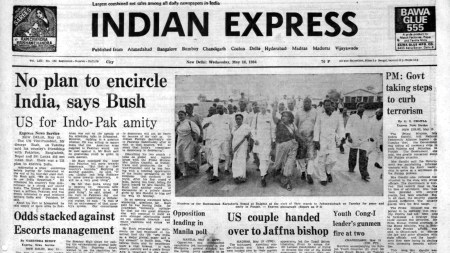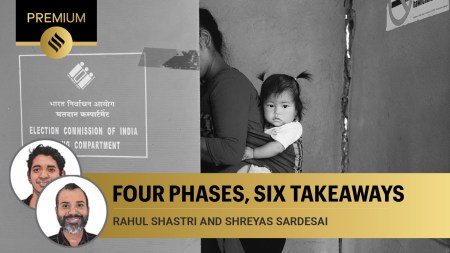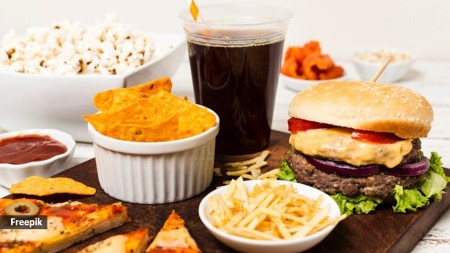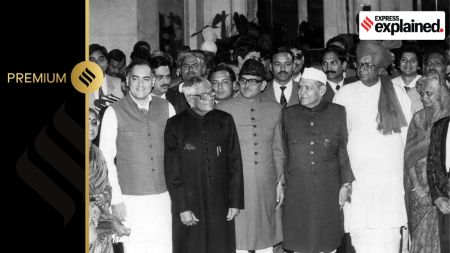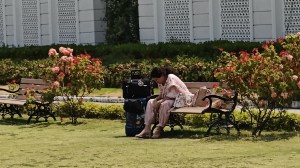- India
- International
On the irresistible charms of chhole bhature
My determination to desist from deep-fried food faces an almost daily challenge from the golden bhatures that appear in every halwai shop in the neighbourhood and the sight of chhole brings memories of spices exploding into my mouth.
 The chickpea is amongst the oldest edible items known to humankind.
The chickpea is amongst the oldest edible items known to humankind.
Which goodie would you find most difficult to give up, if you were to go on a diet?” a friend once asked me. I rarely give much thought to dieting, so I brushed aside her question. But as I recover from an infection that requires me to observe a few food-related restrictions, the answer seems apparent. My determination to desist from deep-fried food faces an almost daily challenge from the golden bhatures that appear in every halwai shop in the neighbourhood and the sight of chhole brings memories of spices exploding into my mouth.
As a child, I would sometimes think of life as an interregnum between two episodes of feasting on the popular chickpea curry and leavened bread. The weekend brunch was a ritual of sorts that began with me scurrying down to the neighbourhood halwai shop, buzzing with impatient chhole bhature devotees. At times, the outfit would run out of the goodies before I came anywhere close to the serving counter. Returning home with a brown paper packet, warmed by the fresh, fluffy bhature and a tiffin box filled to the brim with chhole, topped with a delicately pickled carrot, green chillies, diced onions and slivers of ginger, was a feat of sorts. And, if I was lucky, the man at the counter would hand me a complimentary offering of a bright yellow potato curry that announced its friendship with cumin and coriander from far. A glass of lassi would complete the meal, at times sending me into a stupor.
This was till my parents intervened. Chhole bhature had to be subsumed within my mother’s credo of simple, home-cooked food. The Kabuli chana would be soaked overnight to break down its tough fibres. By morning, the house would be teeming with the aroma of spices — coriander, ginger, cumin, cinnamon, asafoetida. The dough would be ready in a couple of hours when the weather was hot and humid, but in winters, preparation for the leavened bread would begin overnight. “It’s best to use ghee, the oil used by the halwai isn’t good, either for taste or nutrition. Don’t go by appearances. The best chhole is the one which lets you savour the taste of all the spices,” my mother would say. A childhood spent with Partition refugees had taught her how to bring out the best from the Kabuli chana. At times, she would stuff the bhaturas with cottage cheese.
The chickpea is amongst the oldest edible items known to humankind. It is said to have originated in the Caucasus or Asia Minor, and, according to food historian KT Achaya, the legume shows up as early as 5,400 BC in Turkey. In The Illustrated Foods of India (1994), Achaya writes that “two kinds of seed types evolved. In India, a small, wrinkled, dark-coloured seed, and, in the Mediterranean, a larger, smooth, light-coloured one.” The historian believes that the kabuli chana is a “very recent introduction into India, perhaps, in the eighth century from the Mediterranean by an overland route”.
In Curry: A Tale of Cooks and Conquerors (2006), historian Lizzie Collingham notes that chickpeas would often be a substitute for lentils in khichdi during medieval times and that Akbar’s favourite minister Abul Fazl mentions chickpea dishes in the 16th century document, Ain-i-Akbari. She writes that the 17th century French traveller to India, Francois Bernier, described “shops stacked with rice, barley, wheat and chickpeas”.
The chhole bhature, though, seems to have come into its own in Delhi after Partition. My mother often talked of Punjabi refugees bringing the delicacies from their kitchen into the city’s street food culture. “We would keep a lookout for pushcarts with a rudimentary kerosene stove and aluminum containers that smelt of robust masalas,” she said. Several of these itinerant chhole bhature sellers now operate acclaimed fixtures in the city’s street food scene.
None of the halwai shops in my neighbourhood can claim such an illustrious lineage. Yet, every other day, they threaten my resolve. Such is the charm of chhole bhature.
May 18: Latest News
- 01
- 02
- 03
- 04
- 05



